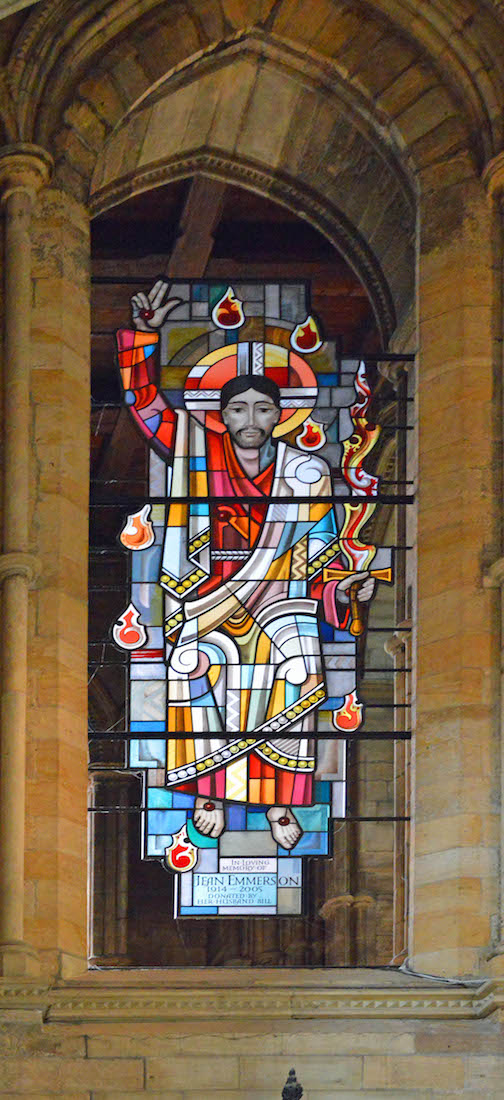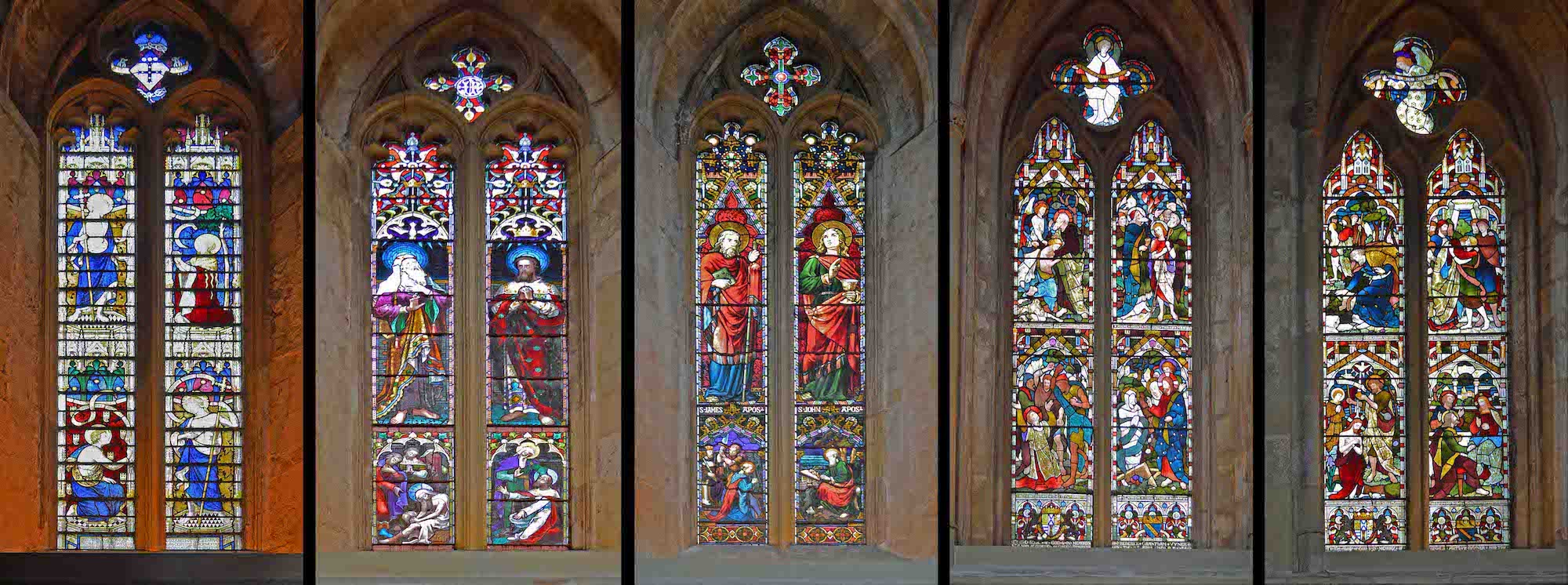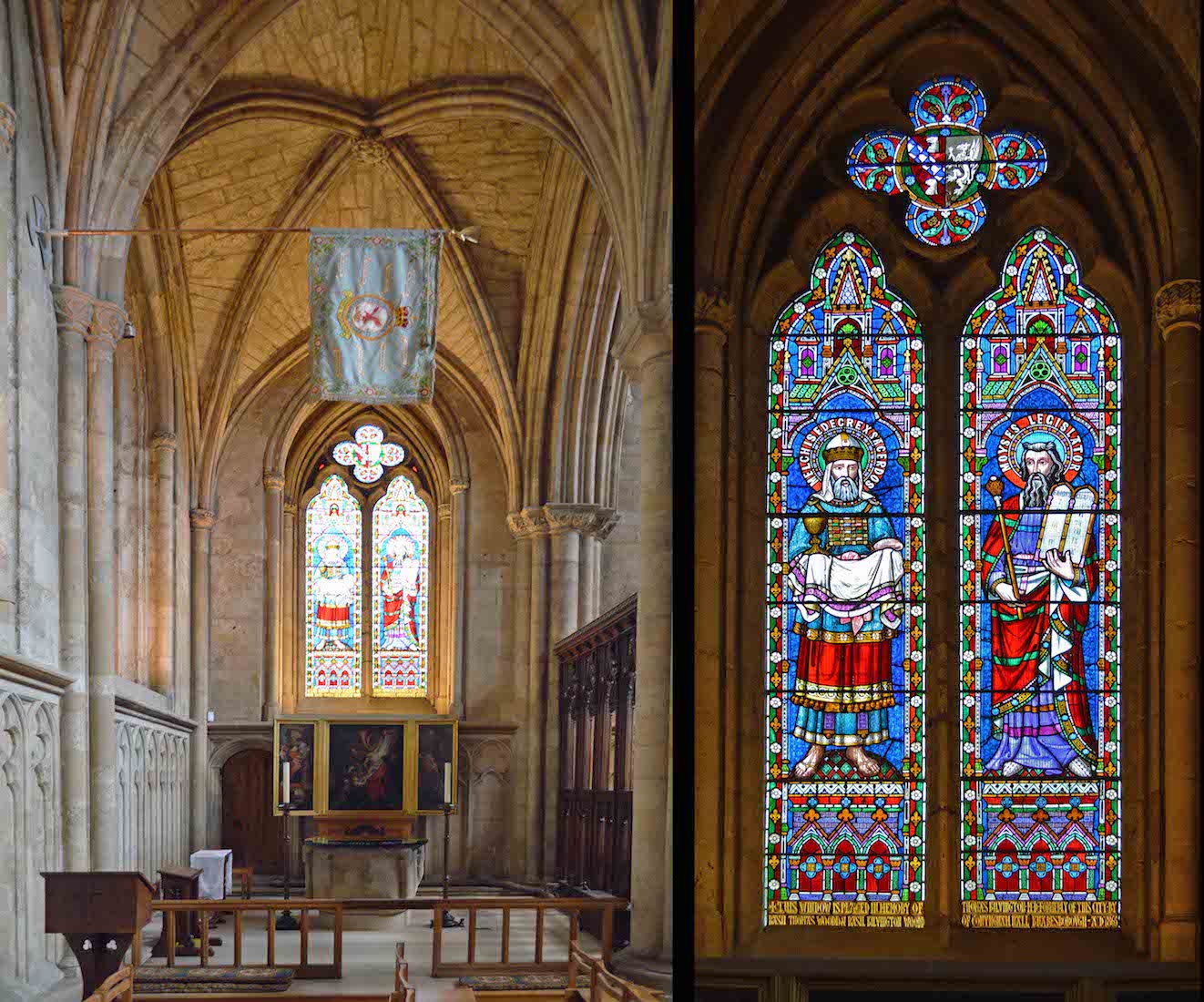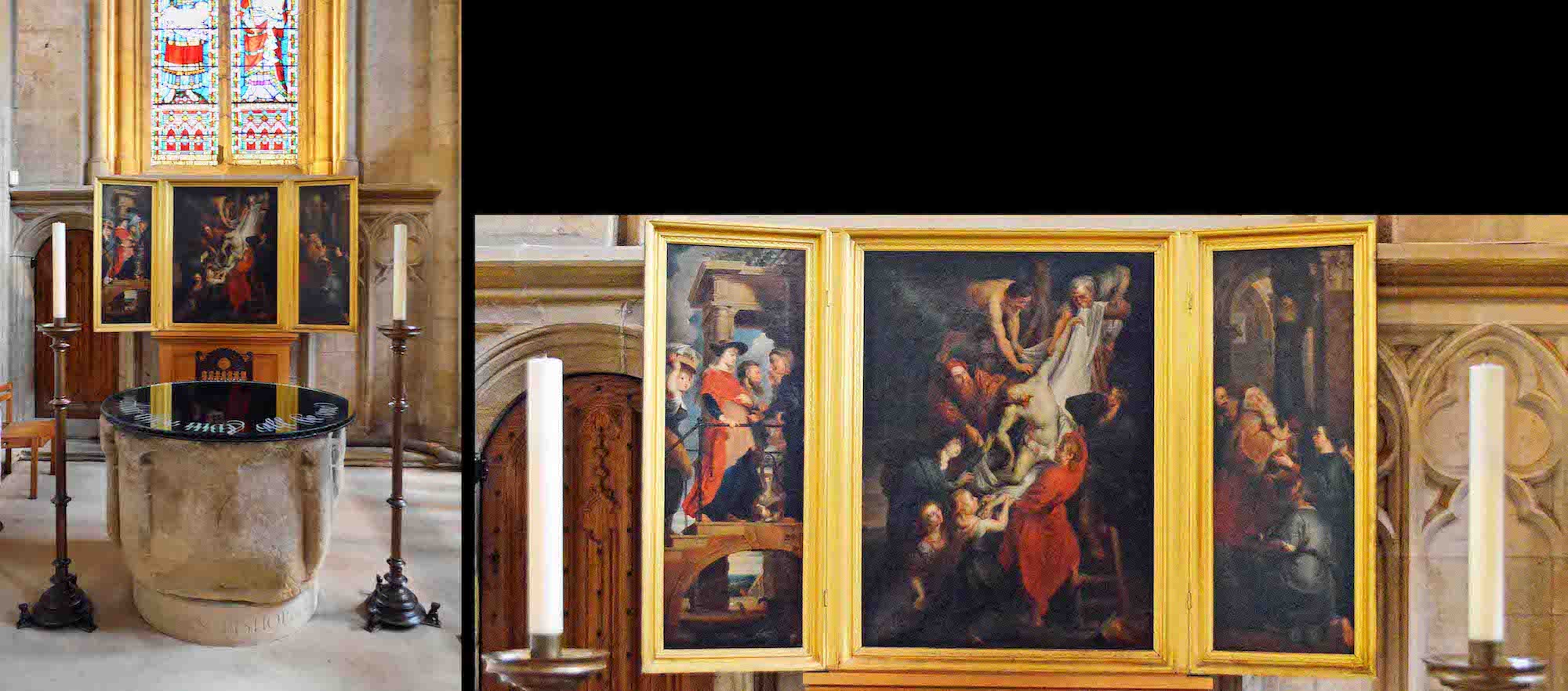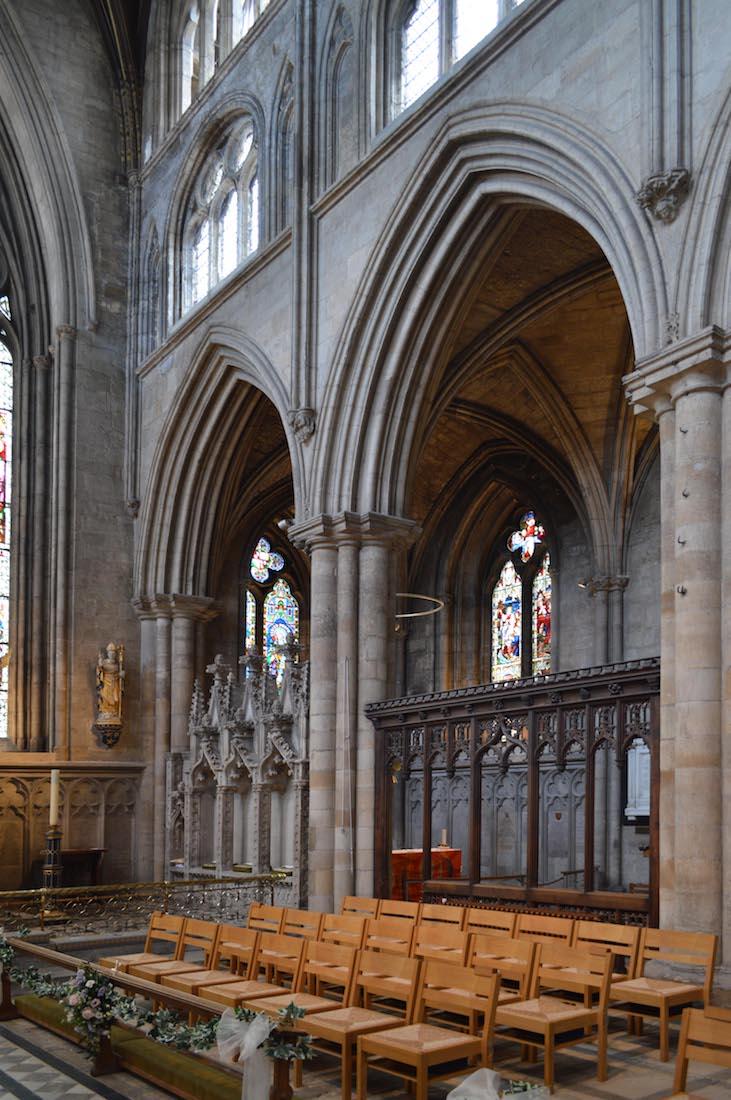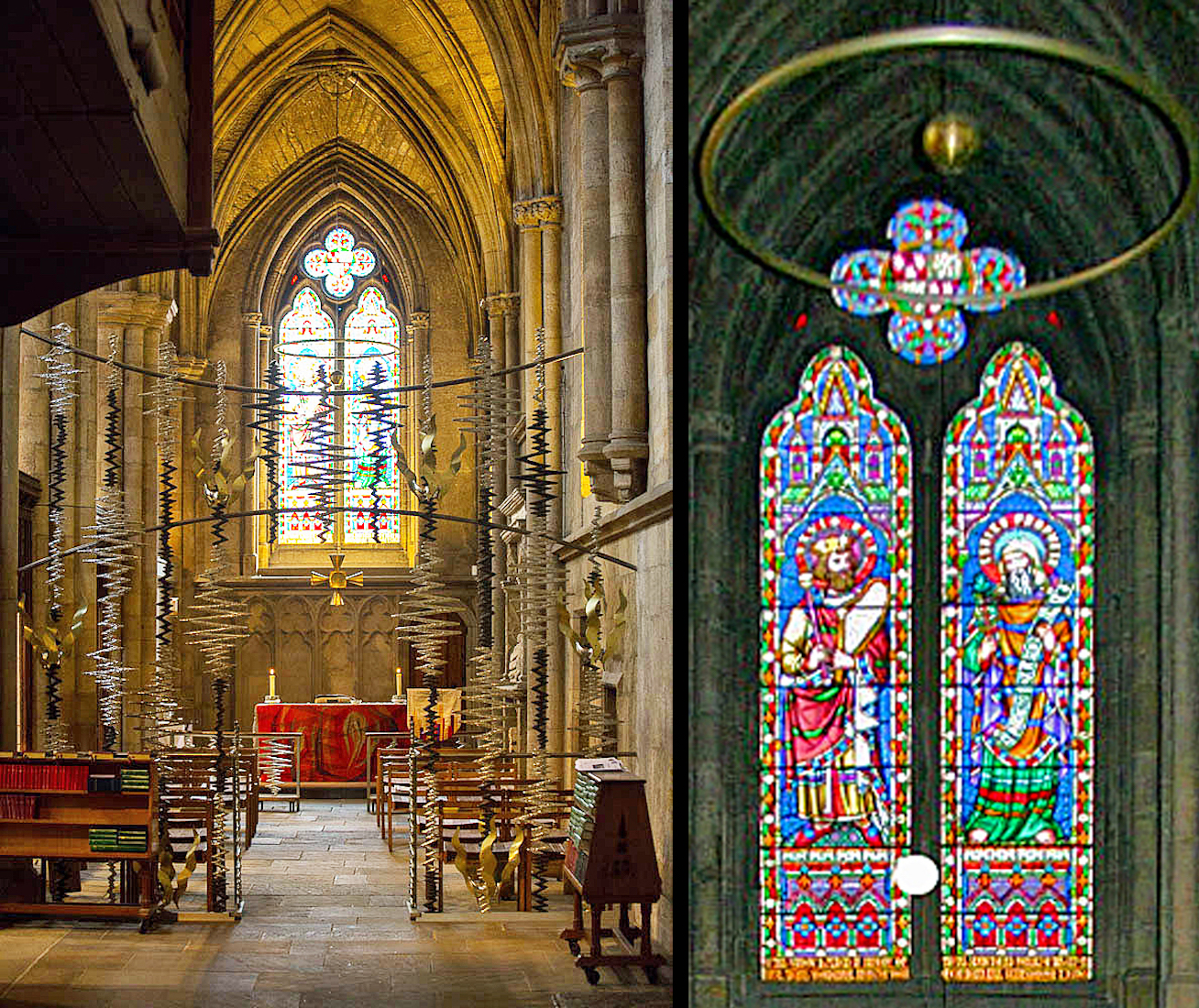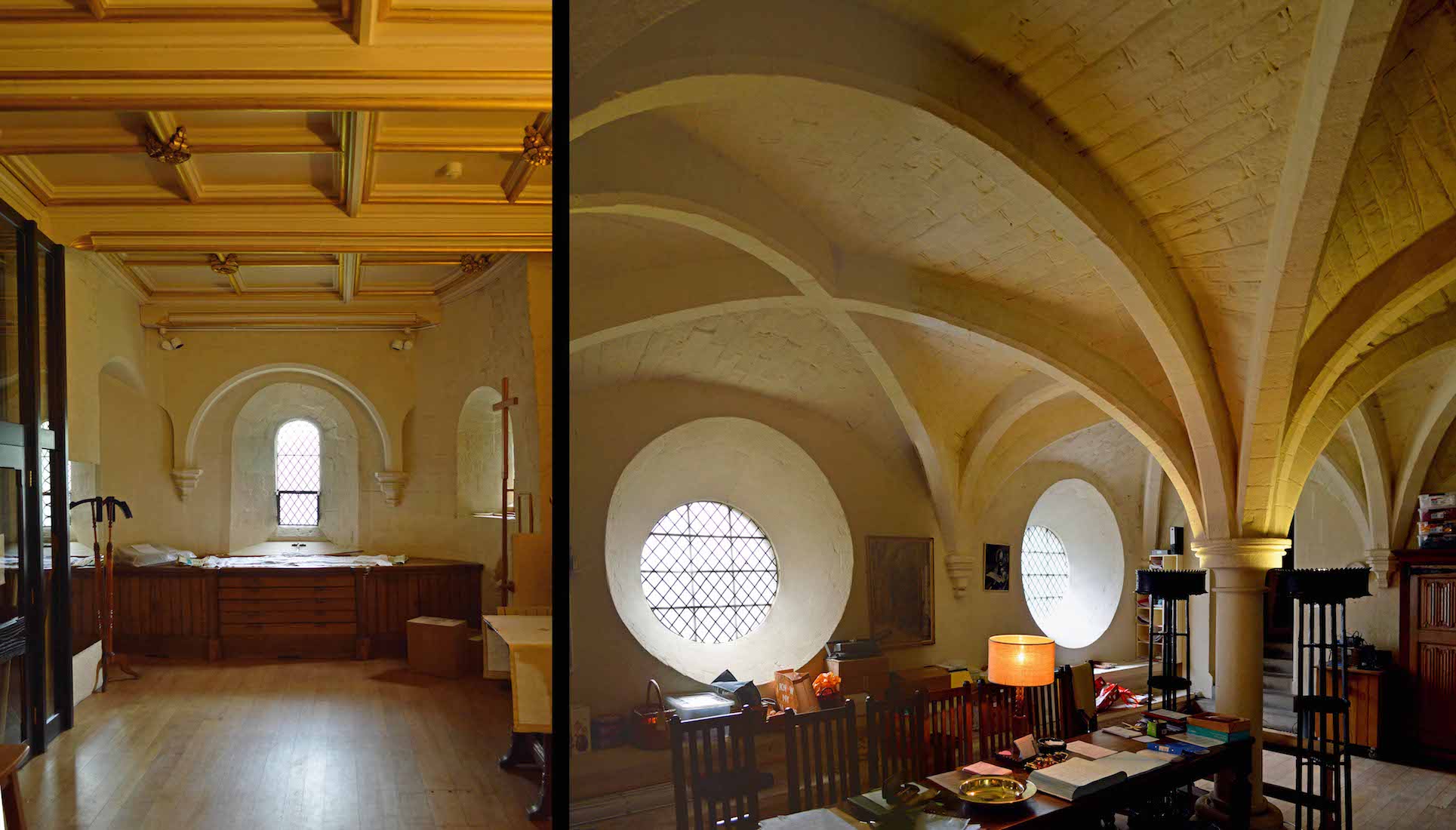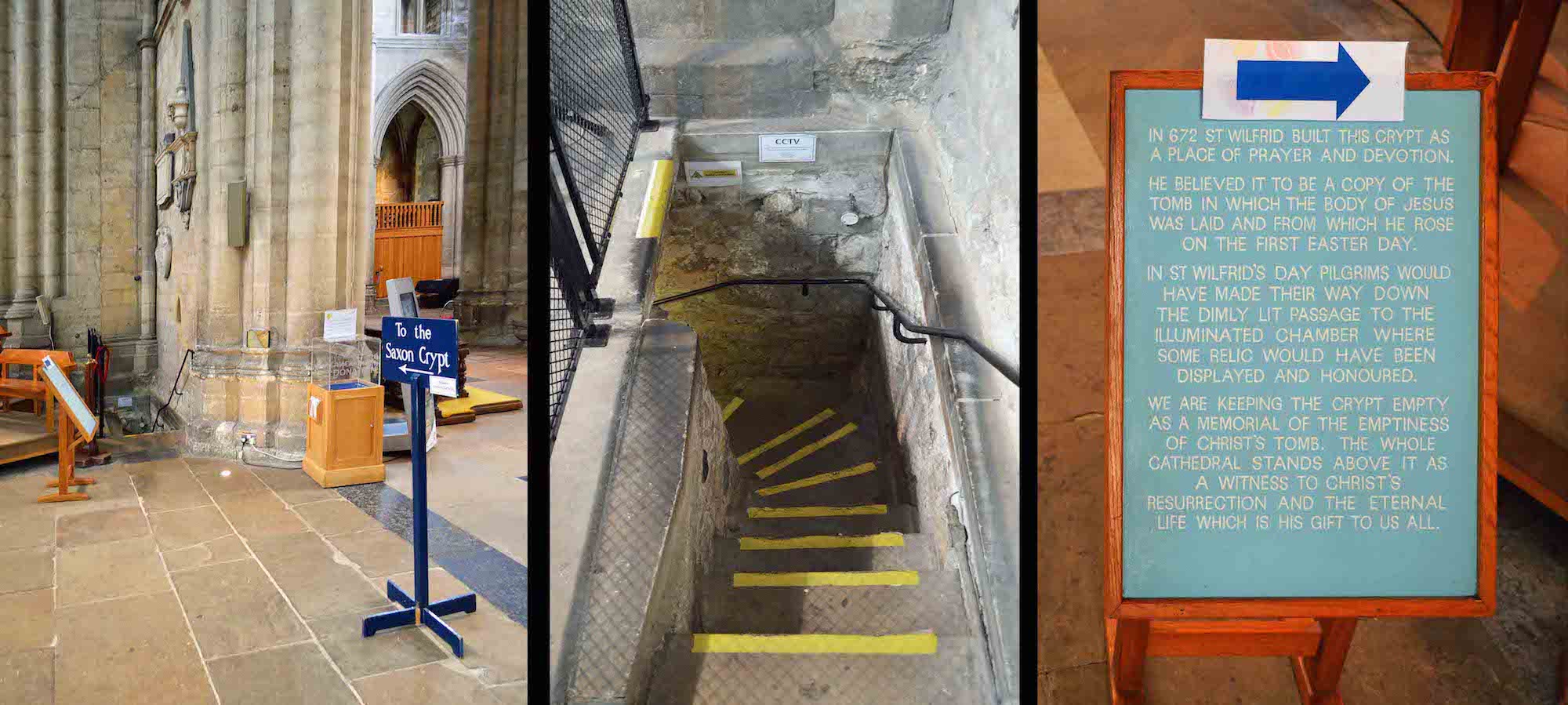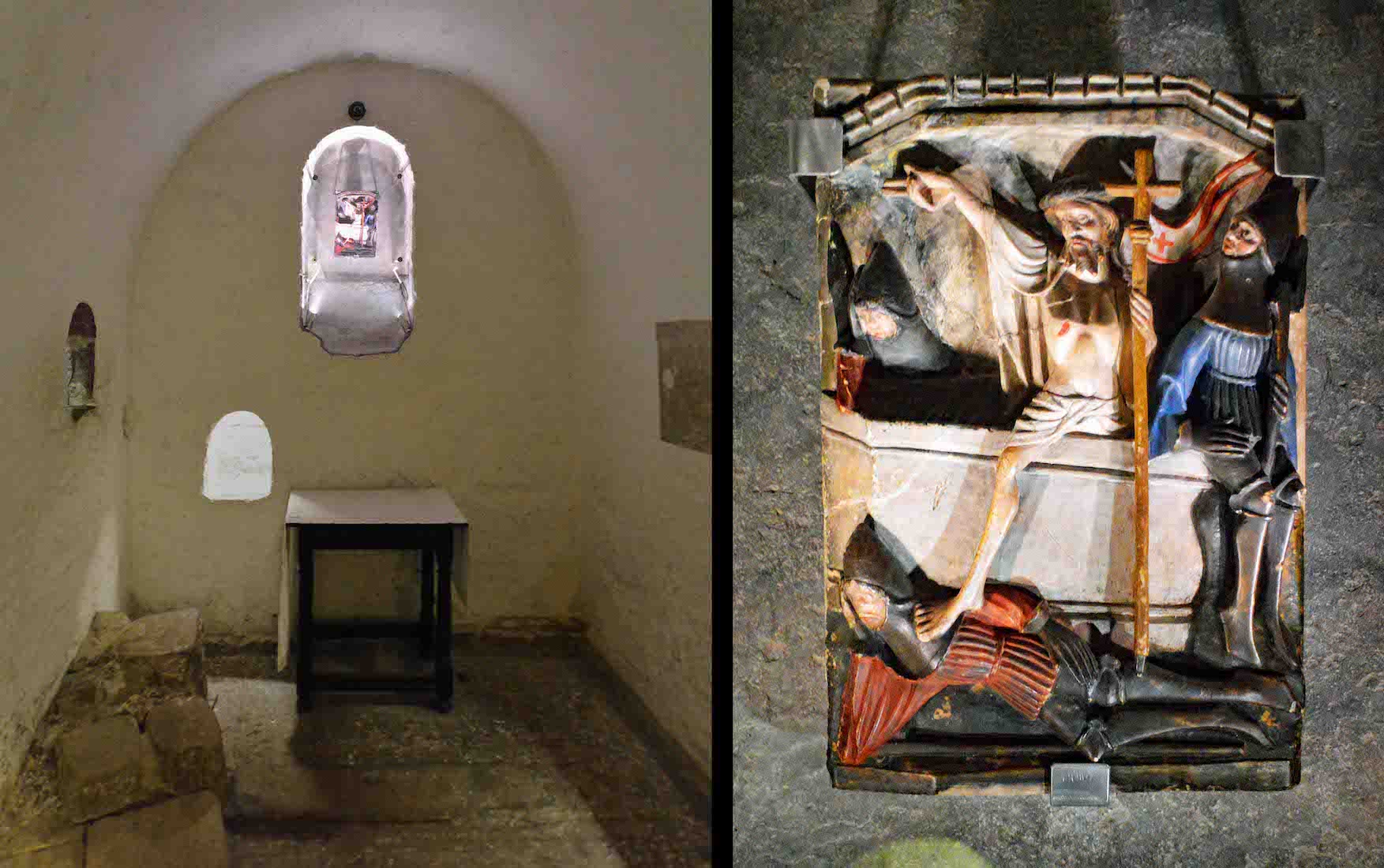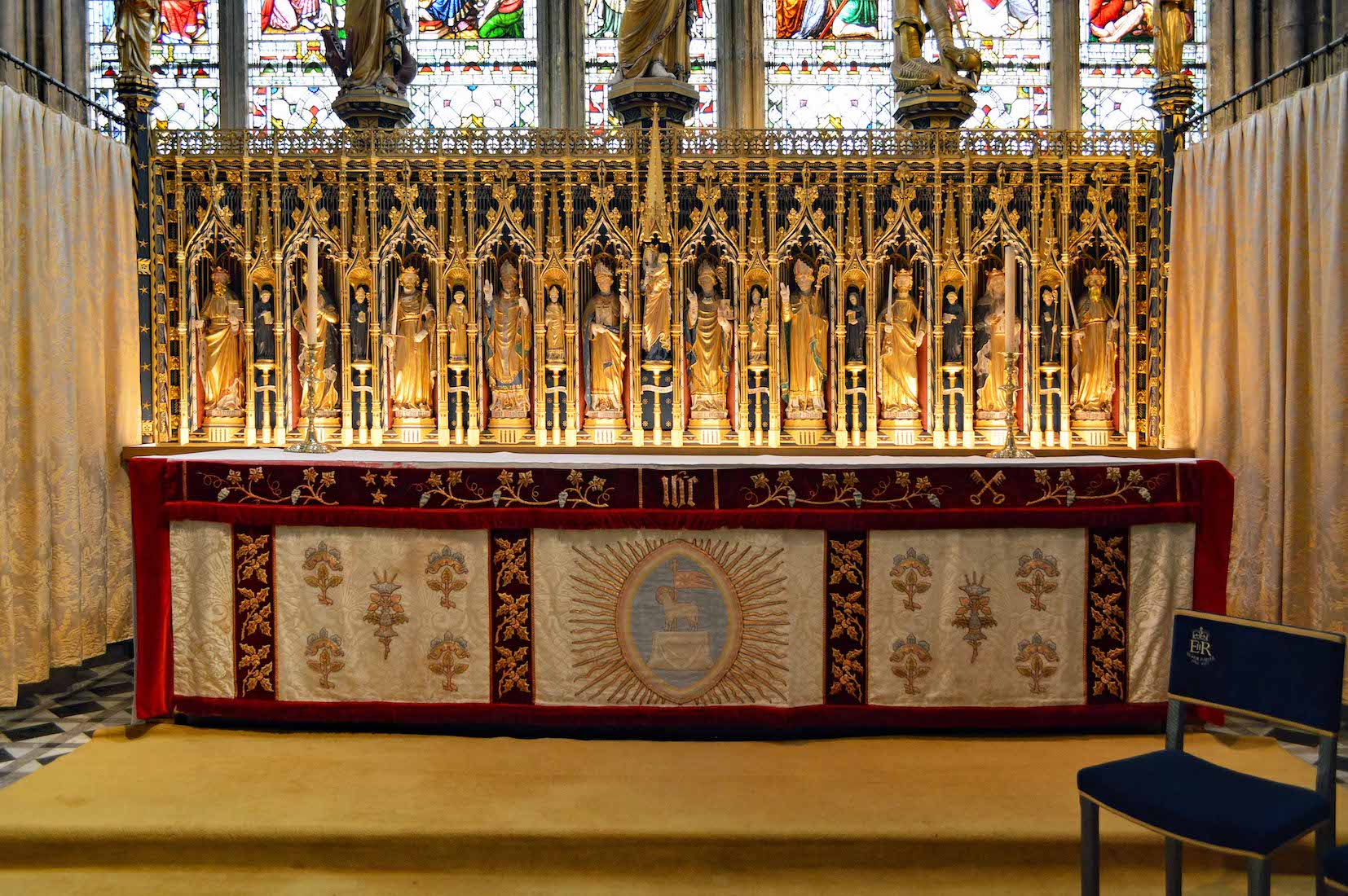
Above the altar is an intricately carved gilded reredos with more figures of kings and bishops set under crocketed ogee arches. This was designed by Sir Ninian Comper and was intended as a war memorial to men from Ripon killed in the First World War. Their names are recorded in panels on either side. PLAN
82. NORTH QUIRE SIDE
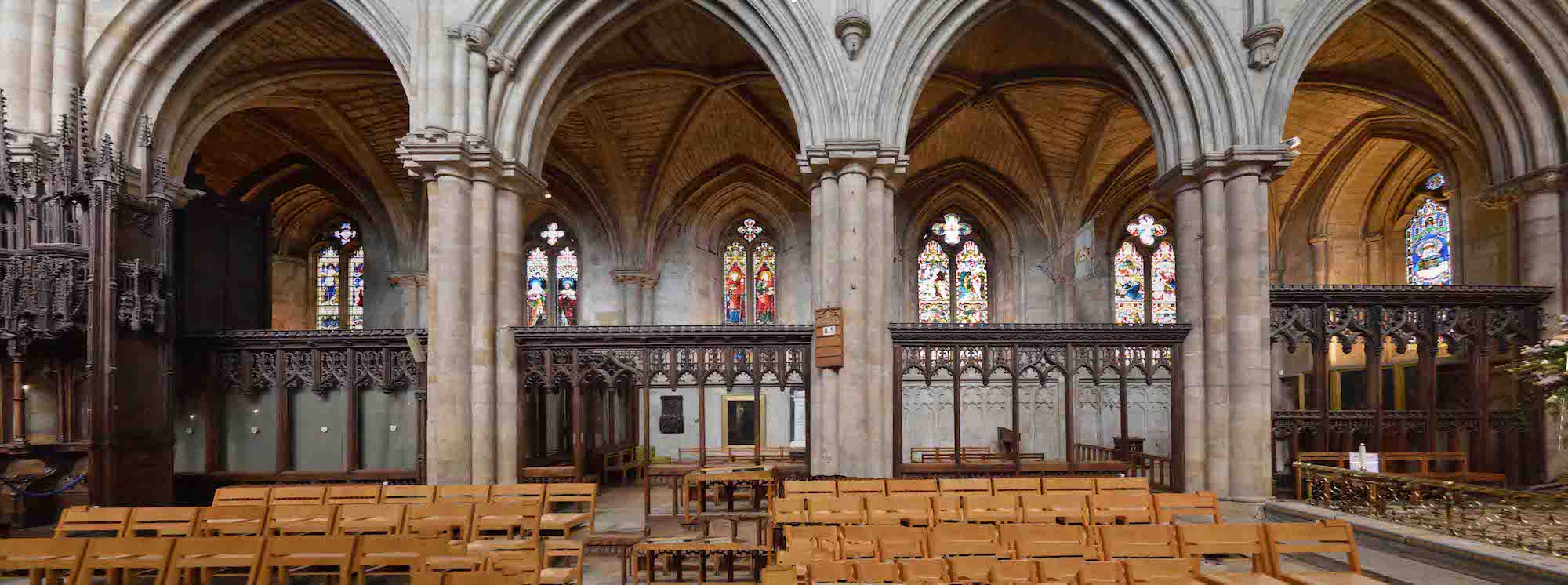
From the central quire area we can look across to the North quire aisle with its stained glass windows. St Peter’s Chapel is at the East end of this aisle.
83. NORTH QUIRE WINDOWS
The three windows at the right depict: • Apostles St James and St John; • Abraham and Isaac / the Call of David / the Stoning of Stephen / the Raising of Lazarus; • Reuben seeking Joseph / Joseph and his brothers / the Baptism of Christ / the Last Supper.
84. ST PETER’S CHAPEL
St Peter’s Chapel on the North side of the chancel has an old font forming the base of the altar. The window has two panels with one depicting Melchizedek, King of Salem and the other Moses. The text on the window is interesting: ‘Melchisedec Rex Sacredos’, and ‘Moyses Legislator’. Moses is sometimes pictured with small horns, following an old mis-translation; he has a fitting hair style here!
85. CHAPEL ALTAR
Above the altar is a painted triptych with Christ’s body being taken down from the cross. The painting is a copy of an original by Peter Paul Rubens in Antwerp Cathedral. The triptych was ideal for transport, with the wings folding in to the central panel giving protection to all the paintings.
86. ACROSS TO SOUTH QUIRE AMBULATORY
The South quire ambulatory has the Chapel of the Holy Spirit at the East end. It is less interesting than the North ambulatory, as it is bounded by the chapter house to the South.
87. CHAPEL OF THE HOLY SPIRIT
The Chapel of the Holy Spirit features a modern screen, altar, rail and hanging pyx – a box cntaining the reserved sacrament – made by Leslie Durbin in 1976. The screen and altar rail contain a striking lightning motif with flames, signifyng the coming of the Holy Spirit. [Photo Credit: Cathedral photo]
88. CHAPTER HOUSE
The Cathedral chapter house is used for administration and is not open to the general public. It has unusual round windows along the South side. I was shown through in answer to my question about the mouse furniture.
89. MOUSE FURNITURE
Robert (Mouseman) Thompson (1876 –1955) was a British furniture maker. He lived in North Yorkshire, and set up a business manufacturing oak furniture, which featured a carved mouse on almost every piece. It is claimed that the mouse motif came about accidentally in 1919 following a conversation about ‘being as poor as a church mouse’. A couple of examples can be found in the chapter house.
91. ST WILFRID CRYPT
At the East end is a small table altar. The small niche in the wall above would originally have contained the relics of saints. Now it contains a C14th alabaster carving of the Resurrection (shown at right). The niche at left (with steps up) is called St Wilfrid’s needle. According to folklore, young women before their wedding would be required to squeeze through this gap to prove their chastity! This completes our tour of the Cathedral.
CONCLUSION
Ripon Cathedral is a special cathedral in so many ways! I hope you have enjoyed visiting it with me.
I am happy to receive constructive comments or corrections concerning this website. The best websites are the ones which have no errors! I am grateful to my wife Margie who has proof-read these pages.
Ripon Cathedral has an interesting website, and some of the textual information about the Cathedral on my site has come from there. I have also drawn material from the Cathedral Short Guide, and from Wikipedia. I am very happy to acknowledge these sources. The link for the Cathedral website is:
The photographs which appear on this site can also be found in higher resolution at:
https://www.flickr.com/photos/paulscottinfo/sets/
Paul Scott Site created 10 / 2018 Reformatted 05 / 2020
